Splitting his time between California and Milan, Jason Swartz has rich experience in the global music festival business as well as in tech and social media. He started collecting contemporary art four years ago with a work by Tschabalala Self, which was then donated to MOCA Los Angeles last year. He has also donated other artists’ works to the collections of the Hammer Museum, Pérez Art Museum Miami, and others. He is currently on the Acquisitions Committee at MOCA Los Angeles.
LARRY’S LIST talked to Jason about how he started from being obsessed with fossils as a kid to collecting contemporary art; his wish to have a unique and easily accessible space to exhibit part of his collection; why getting to know artists is a big part of the passion; how his expertise in tech and social media helps his art collecting; and how social media is influencing the art market during and after the pandemic.

Collecting
What made you want to start collecting art? And what is the main motivation behind your collecting?
I’ve always had a desire to collect pieces of history. As a kid, I was obsessed with fossils and rare stones, which grew into a teenage addiction for comic books, posters, and sports memorabilia. As an adult, collecting art feels like the highest level of that evolution, and the concepts, history, and life stories behind artists themselves really drives my impetus to collect in depth.
When did you fall in love with a piece of art? What was it?
The first time I saw a Donald Judd Stack, I was compelled to learn more. Its scale overshadowed me and its simplicity confused me. The objects were slick and shiny like a mint vintage 60s sports car, but in the end, it was just a column of stacked architectural squares. I had to know more. Why this set of objects were at the pinnacle of respect from contemporary art intellects, museums, and billionaire collectors. The curiosity launched my endless pursuit for understanding art, and my love for the stories behind the cannons of art history. Falling in love with art can happen often, but growing with it, learning and asking questions is what gets me most excited.
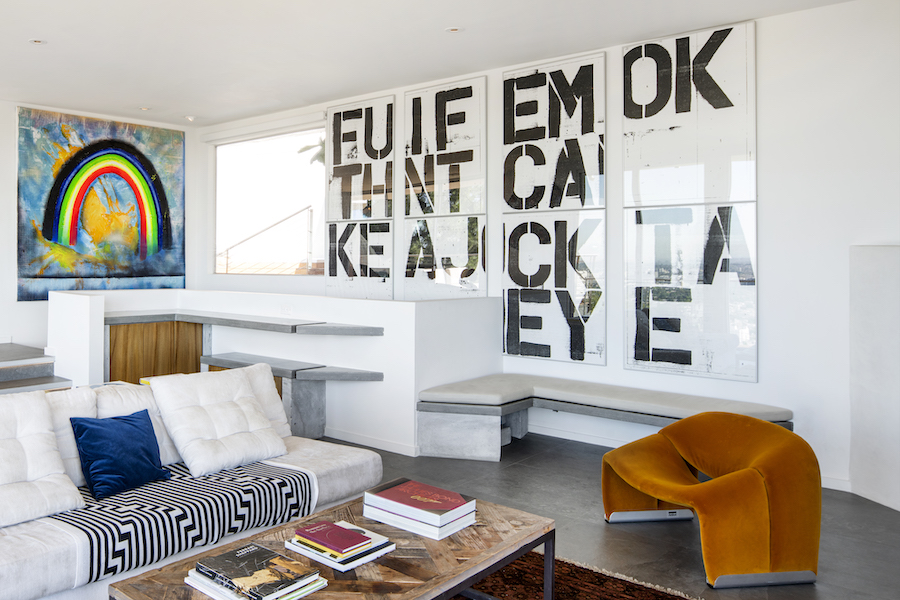
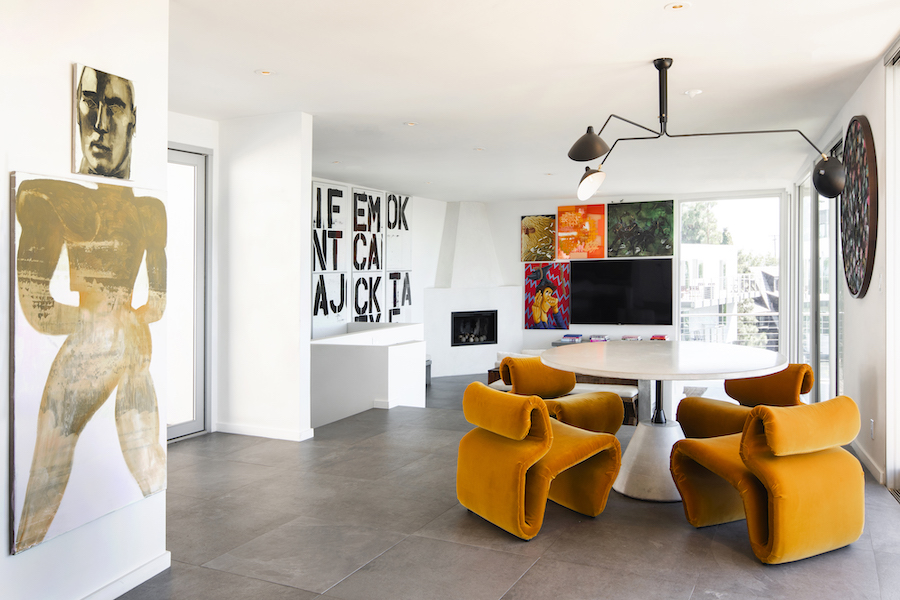
What is your focus regarding the artists in your collection? Are you more interested in emerging or renowned artists, international or American artists?
I often gravitate toward art with a visual language that evolves as I live with it. Many artists in the collection were born in Korea, Cameroon, throughout Europe and Asia, but most now work and live in the US. I love meeting artists and being a part of their coming of age, with the hope that my support and advice will help them envision their greatest ambitions for years to come.
What is the theme that unites all the works you have acquired?
While I remain quite eclectic, often my collection is vibrant, colorful, or beautifully chaotic that it forces the viewer to engage with the work. Once engaged, the viewer can learn this is more than a visual allure, rather a powerful call to action. The understanding of the works can help them empathize with topics of cultural conditioning, mental health, LGBTQ rights, environmentalism, and modern symbols of protest.
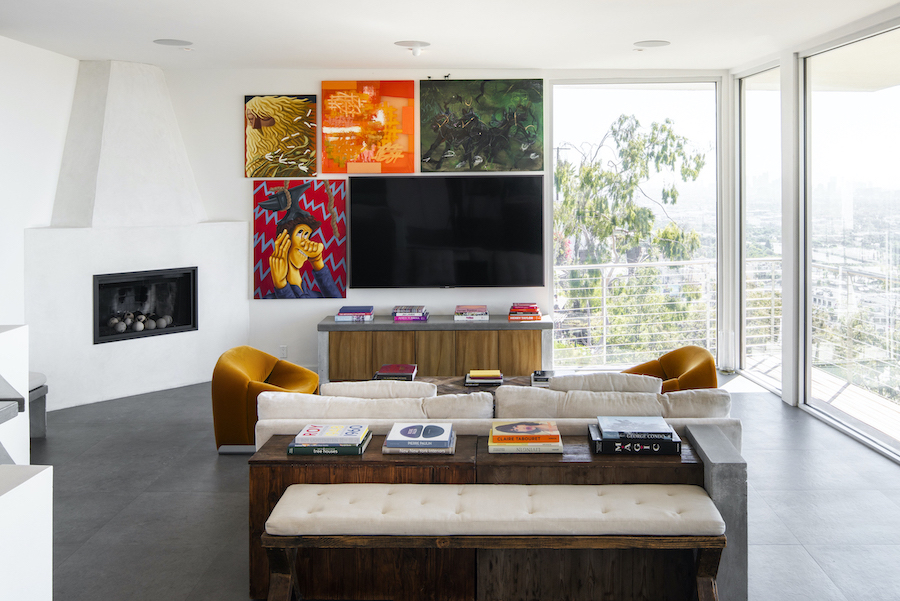
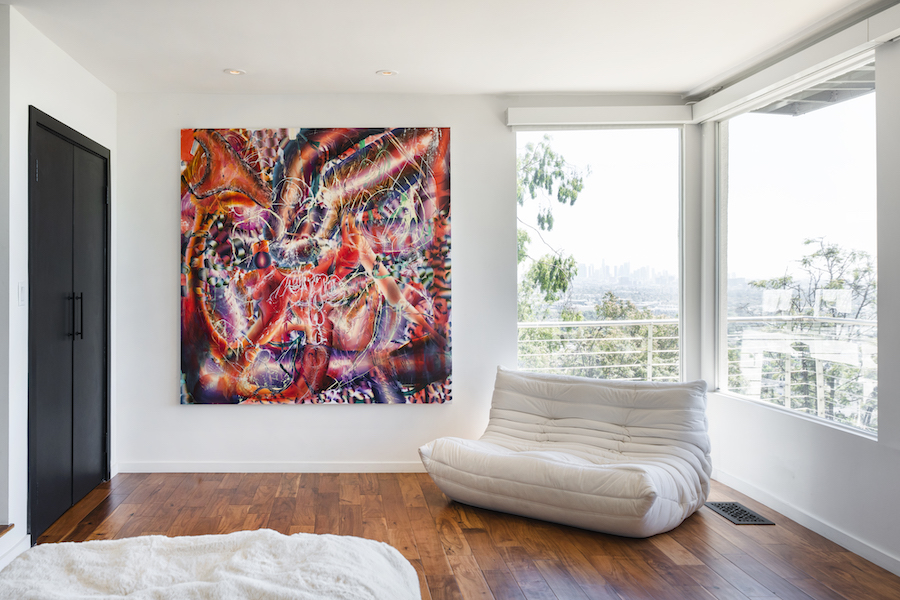
What were the first and the latest artworks you purchased?
The first serious artwork I bought was a masterful work by Tschabalala Self, “Damsel” which, after living with for some time, I donated to MOCA Los Angeles in 2021. Recently, I’ve acquired works from Derek Fordjour, Lauren Quin, Spencer Russel Lewis, Anastasia Bay, Alex Foxton, and Vaughn Spann, to name a few.
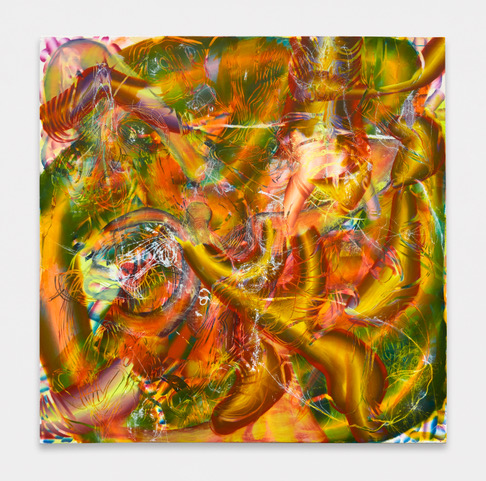
How many artworks do you own? Where do you display your collection?
Relatively soon I’ll cross the threshold of 100 works. Thirty or so are currently displayed in my Los Angeles home. I try hard to avoid storing work; and when my personal walls reach their limits, the works live at the homes of my brothers and greater family both in Europe and the States. I came of age working with creatives in the music industry, and the idea that a sterling example of one’s works disappears into storage right after being exhibited never sat well with me.
Have you ever presented or would you wish to present your art collection publicly?
I’m quite open about my collection. I really enjoy artists, curators, and collectors seeing the work in person when I host social gatherings. I’ve recently begun the search for a unique and easily accessible space where I can exhibit parts of my collection publicly. There’s so much art I love that doesn’t make sense to live with in a domestic setting.
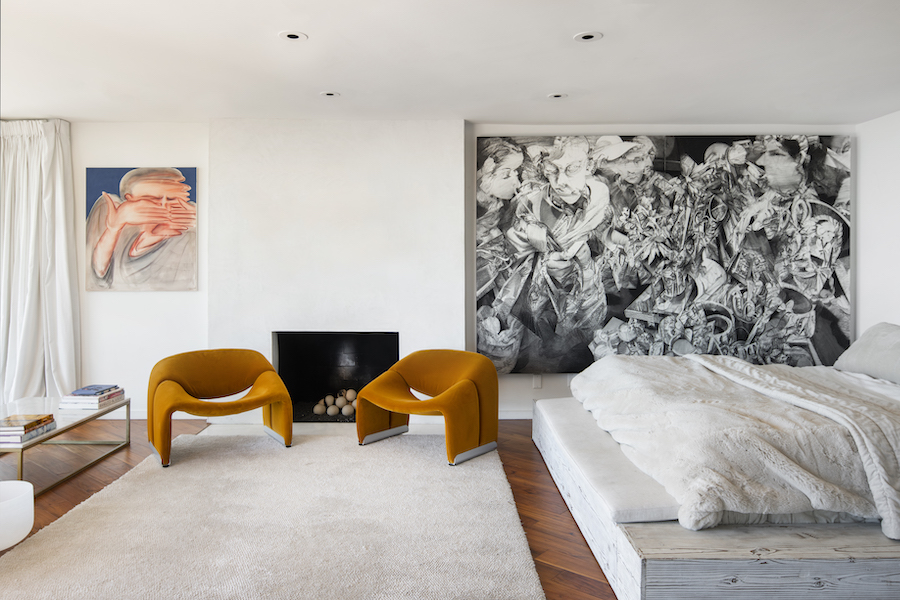
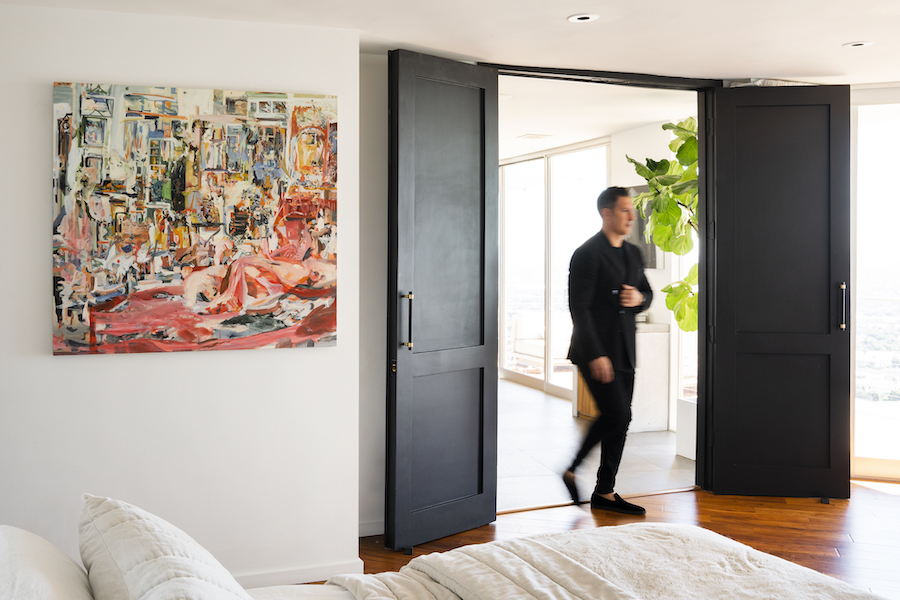
What considerations guide you to make a purchase?
I have my own personal algorithm I apply to my acquisition decisions that always starts with a visceral response to the work. I need to feel something, or absolutely nothing, and then question why so on either side of that perspective. Like all people I’m an amalgamation of the influences around me. I’ve put a lot of effort toward discerning whose opinions, social media posts, and news I let into my personal sphere.
How important is it for you to meet the artists who created the artwork?
Getting to know artists is a big part of the passion I have for collecting. I’ve either met, spoke, or messaged every living artist in my collection. I’m not looking to simply accumulate objects; I want to know the stories and personalities behind the work. For me, art is about the human connection as much as the final picture.
How does your expertise in tech and social media help or influence your art collecting? For two of the four years I’ve been seriously collecting, the entire art world was forcibly shoved online. As such, I developed several social media methods, and information alerts to discover new artists. Also, having a strong knowledge base of social media algorithms, and many less-known features on Instagram opened some fun advisory conversations with artists, galleries, and museums. Helping them get the social media attention of those they most desired wasn’t business for me, it was fun, and lead to more frequent conversation about art and life advice overall.
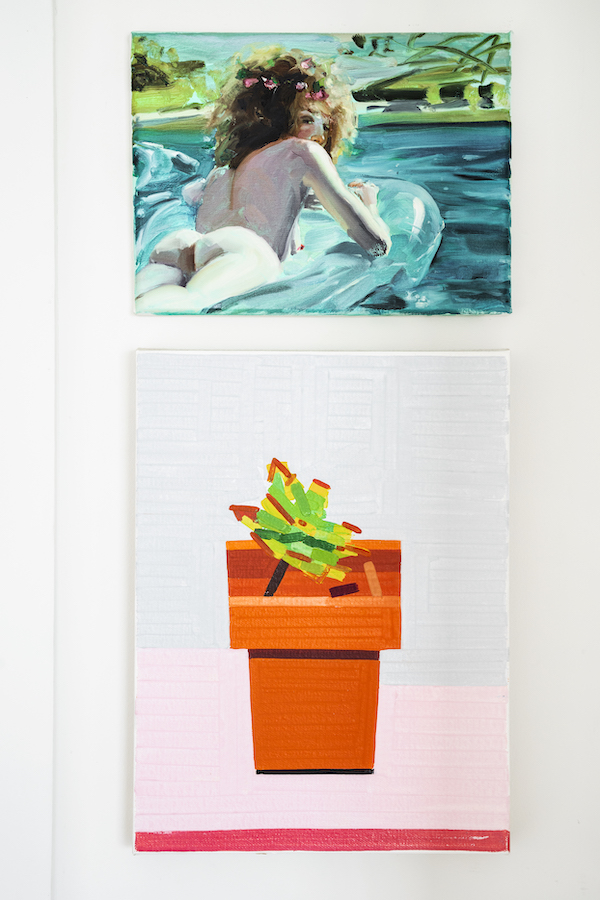
Guy Yanai in Jason’s kitchen. Photo: Gavin Cater. Courtesy of Jason Swartz
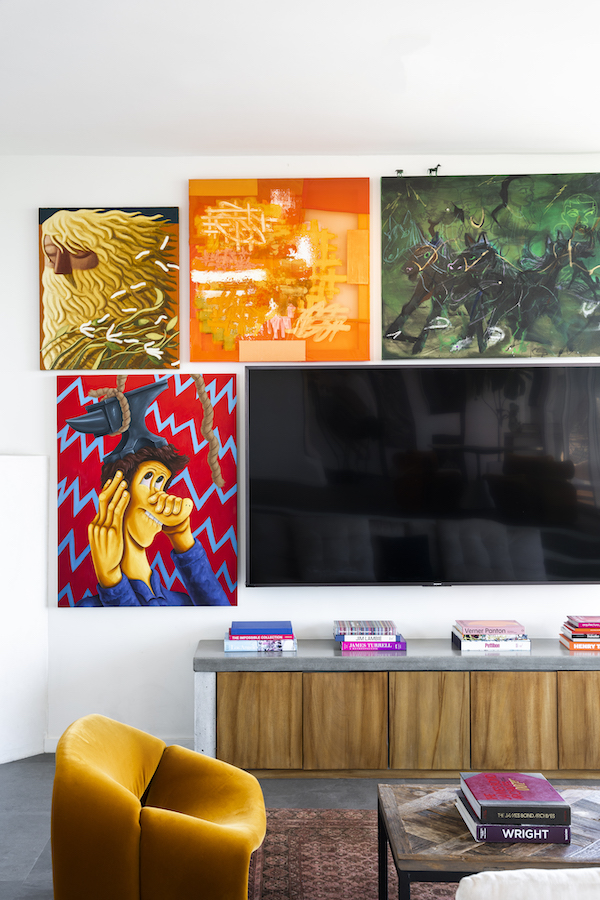
The Art World
How is social media influencing the art market? How does this influence change during and after the pandemic?
During the pandemic, older collectors, dealers, encyclopedic curators were pulled into an online vortex for their dose of art world voyeurism. With that came a tremendous amount of new discovery. I feel that social media has been the catalyst for the dramatic increase in new collectors. Also, social media has allowed artists to receive more immediate attention than ever before, which has led to a domino effect of global gallery expansions.
Post-pandemic, my biggest hope is that the art world within social media matures like a collector’s taste evolve over time. My biggest post-pandemic concern is that artist discovery becomes too focused around trends without any academic critique. I am also worried if these expansions could lead to lower-quality work from artists who are pushed to overproduce, but after all, it is a great time to be an artist, especially a good one!

How is your experience so far on the Acquisitions Committee at MOCA Los Angeles?
Being a part of MOCA in Los Angeles has been tremendously rewarding. It’s a real joy to review all the works that have been considered for accession, getting historic contexts from the curators, and personally connecting with some of the top collectors in the world. Also, I love introducing artists to museums, be it MOCA or others, and seeing them connect on a personal level — it really helps curators get to know their practices.
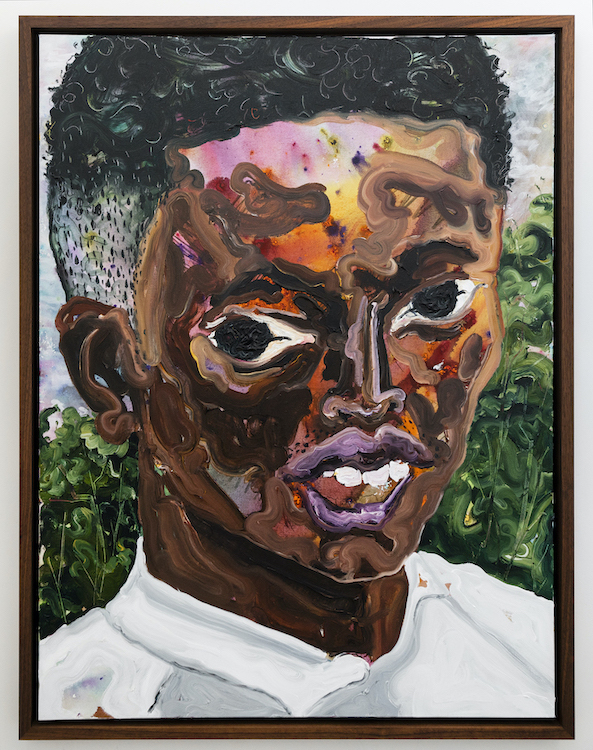
What do you think is the art-world pet peeve?
Following trends and public opinions without developing an opinion of one’s own.
Who inspires you the most in the art world?
Obviously, the artists inspire for more reasons than I can list; and without dedicated curators, contemporary art wouldn’t continue to exist in such a high regard. That said, the young bootstrapping gallerists who gamble their livelihood to support someone else’s wild and unique vision are taking major leaps of faith. That’s something I can really relate to with my own risks I’ve taken in my career.
Can you name some emerging artists who should be on our radar?
Emma Webster, Mark Yang, Michaela Yearwood-Dan, and Andrea Marie Breiling.
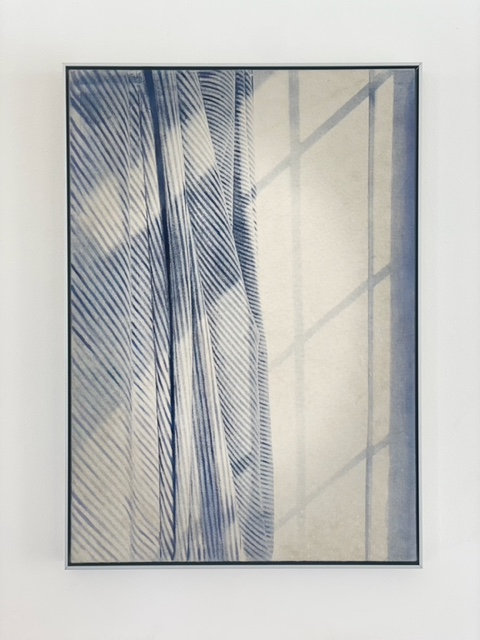
Instagram: @jason007swartz
A selection of artists Jason collects:
Anastasia Bay
Christopher Wool
Lauren Quin
Spencer Russel Lewis
Vaugn Spann
By Ricko Leung





